Two hundred and five miles. That’s how far an immature tiger shark, nicknamed “The Judge” by scientists, travelled in 16 days since being tagged with a satellite tracker off the western coast of Florida.
Nature Conservancy scientists are using data from two satellite-tagged sharks to better understand the extent of their migration. These data will feed into the a larger analysis of marine and avian migration across entire Gulf of Mexico.
But before they can get the trackers on, they needed to catch the sharks.
Aboard the R/V Bellows
About 2 weeks earlier, the research ship R/V Bellows set sail from Sarasota, Florida at 7:30 am. On board were scientists from Mote Marine Laboratory, The Nature Conservancy, and other research institutions. Their goal was simple: to catch and collect data on as many sharks as possible and their population status.
Cruising between six and 10 miles off the coast, the research team and local college students unspooled 10 drumlines (hooks anchored to the seafloor) and a mile-long longline with about 70 hooks, each baited with a freshly-chopped (and bloody) chunk of bonito, a small tuna species.
“The goal of the cruise was to resume the Florida fisheries-independent monitoring program, which is what scientists conduct to assess fisheries from an independent perspective, not using the catch landing data,” says Jorge Brenner, the Conservancy’s associate director of marine science for Texas. But Brenner, and many of the other scientists on board, were there to collect additional data, including tagging “The Judge” and one other shark with satellite trackers.
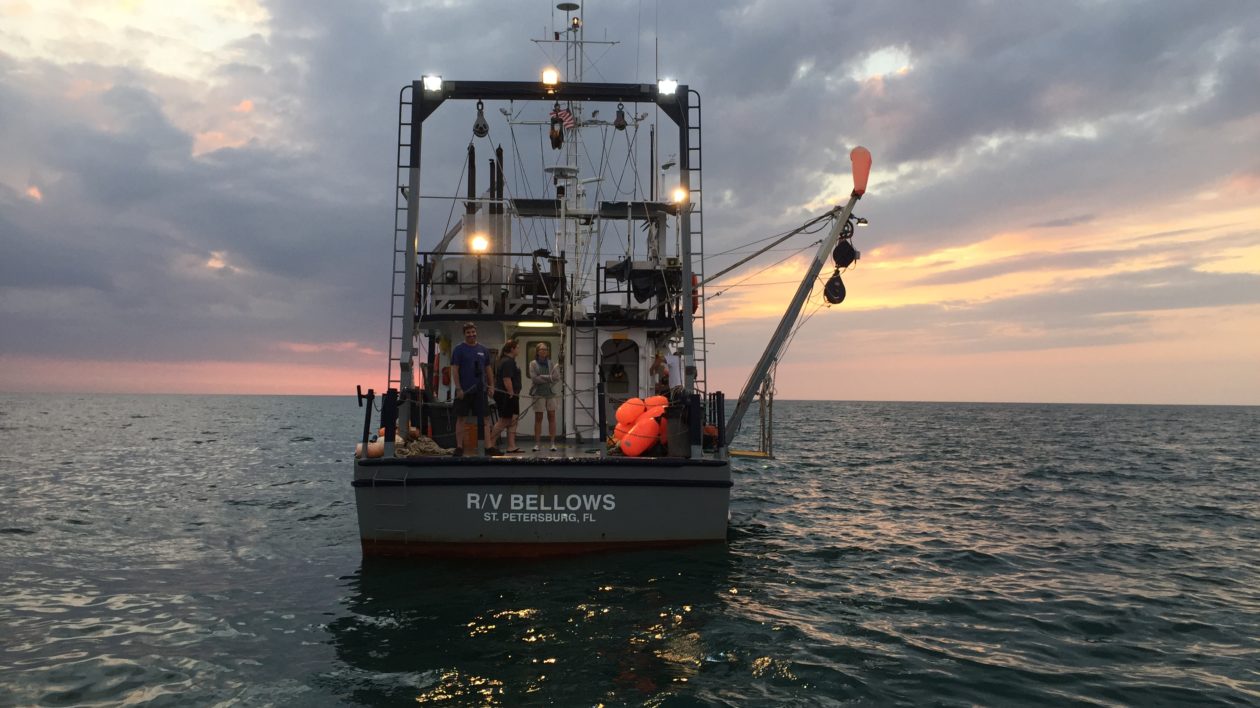
After lunch, the boat turned back and began checking the hooks, starting back with the first one deployed. Hook after hook came up from the drumline and longline. Some were empty, but others had thrashing sharks at the end. One after the other, several blacktips and a black-nose shark were each brought on-board for data collection. Finally Brenner saw what he had been waiting for: a tiger shark.
Hauling the shark on board in a net, the scientists set to work quickly. It took about three people just to hold the shark down and secure a hose through its mouth that pumps water over the gills, allowing the shark to breath out of water.
First they measured the shark — 1.75 meters for this young tiger — allowing them to roughly estimate its age. Next, scientists from Mote attached a thin, yellow plastic tag (called a streamer tag) to the base of the shark’s first dorsal fin. If a commercial or recreational fishermen catches the shark again, they can call a phone number on the tag to report the catch back to the marine lab.
Next, Samantha Ehnert from University of North Florida examined the shark to determine its sex. She uses a portable ultrasound to see if the female sharks are pregnant, and count how many pups they have. A quick check reveals that The Judge is a male.
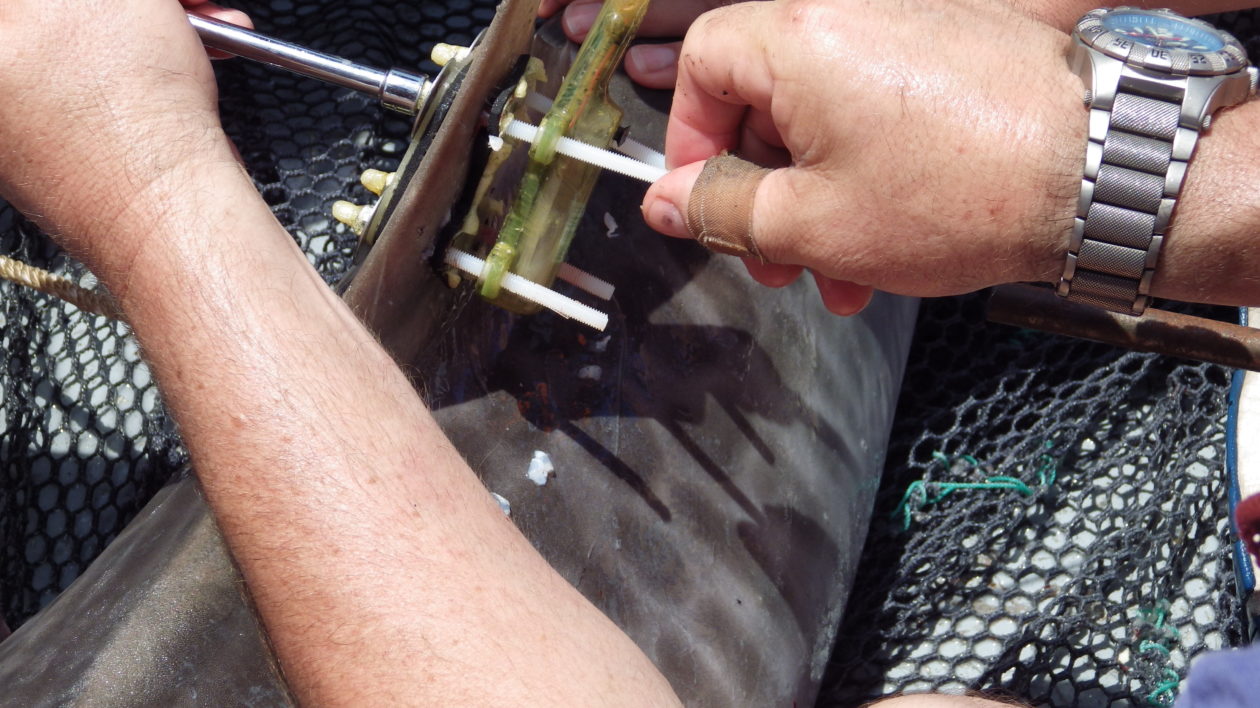
Then it was Brenner’s turn to attach the SPOT satellite tag. With everyone else holding the shark steady, he drilled four holes straight into the cartilage of the shark’s largest dorsal fin. He then screwed the palm-sized tag directly to the shark with nylon screws, which won’t rust in the saltwater.
“Every time this shark comes to the surface, the tag will try to ping a nearby satellite and connect,” says Brenner. “The shark’s fin has to be on the surface for at least 15 seconds to get an accurate location.” The tracker will start sending data after just six seconds immersed in salt water, and will hopefully provide location data for one year.
With the screws secured, the researchers remove the water hose from the shark’s mouth. A few seconds later The Judge vomits a putrid swill of black feathers all over the deck. Brenner and the team gently send it back overboard, careful to avoid a final thrashing. And then it’s on to the next hook.
Assessing the Extent of Gulf Migrations
Over the course of three days, Brenner and the other scientists onboard caught 35 individual sharks from six different species: bull, tiger, blacktip, black nose, nurse, and great hammerhead. Brenner attached a second satellite tag to an immature female bull shark, another species he is targeting for research.
“Our primary goal is to assess their horizontal movements and the magnitude of their migrations,” says Brenner. This research is part of larger project to map and analyze migrations across the Gulf of Mexico for multiple taxa, including sharks and other fish, mammals, sea turtles, and birds.
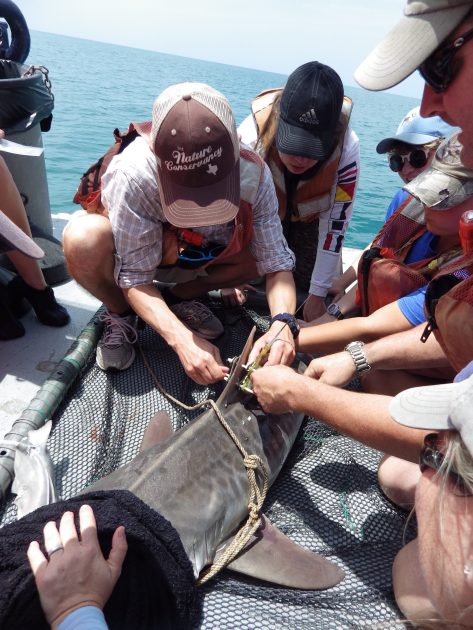
Brenner’s existing analysis is based on data shared from more than 100 scientists in the Gulf region. But often that data is limited or incomplete, perhaps only showing the movement track, without more detailed information about the times of their migrations. The newly tagged sharks will provide additional detail for bull sharks — already included in the first phase of the analysis — while the tiger shark will add the very first data on a new species.
“The tags will also give us information about the different habitats that they use in this particular portion of the Gulf,” says Brenner. Initial data from other studies suggests that the west Florida shelf might acts as a nursery area for juvenile tiger sharks. Brenner hopes to continue tagging a few animals each year, likely expanding into other species included in the analysis, including bony fish and sea turtles.
So far, The Judge has lived up to Brenner’s expectations, vomit included. Tiger sharks often spend a lot of time near the ocean’s surface, because they like to prey upon seabirds. After traveling south, the shark has stayed close to the western Dry Tortugas — a few remote islands and the end of the Florida Keys — swimming a total of 900 miles.
“It’s just speculation, but I suspect it’s been down there eating newly fledged seabirds,” says Brenner. “Either way, he’s a really cool shark.”
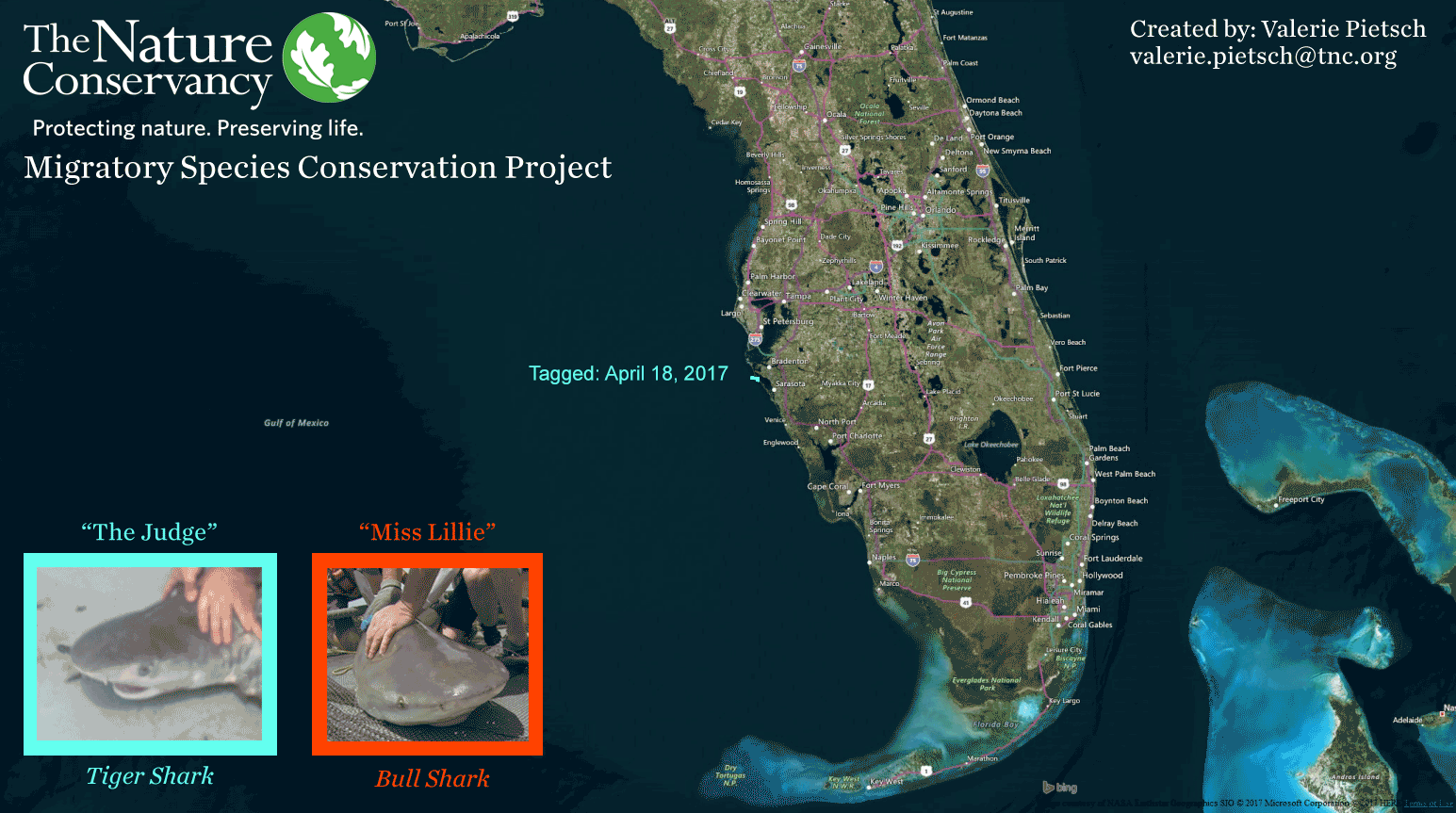
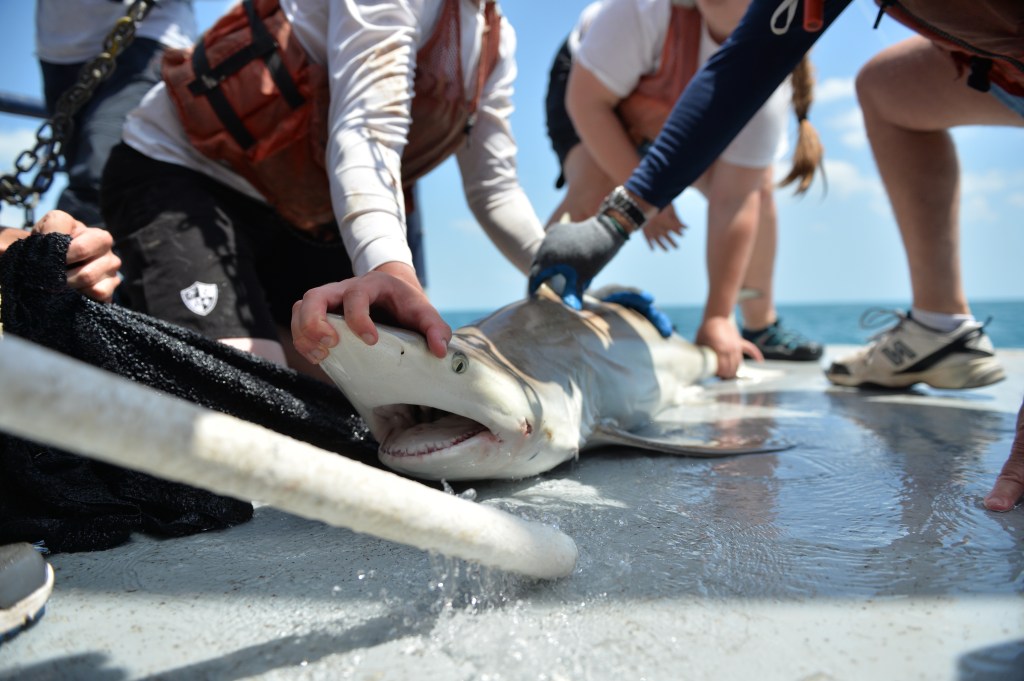



Question: Doesn’t drilling ” four holes straight into the cartilage of the shark’s largest dorsal fin” cause severe pain to the shark? Is a local anesthetic used?
All aspects of our shark tagging project are designed to minimize stress and harm. We use special stress-reducing fishing gear and tagging equipment, and try to shorten handling time to promote shark safety. Sharks have many fewer nerves than we do and their cartilaginous dorsal fin has no blood vessels. Therefore, although we don’t know exactly how it feels to a shark when we tag it, we expect that without nerve endings in its fin, it is not experiencing pain, but only some discomfort.
So much more fun to read about the sharks in our beloved Gulf of Mexico than the ones in DC…interesting.
absolutely fascinating!
Protect all the Animals.
Very interesting.. Enjoyed my read.